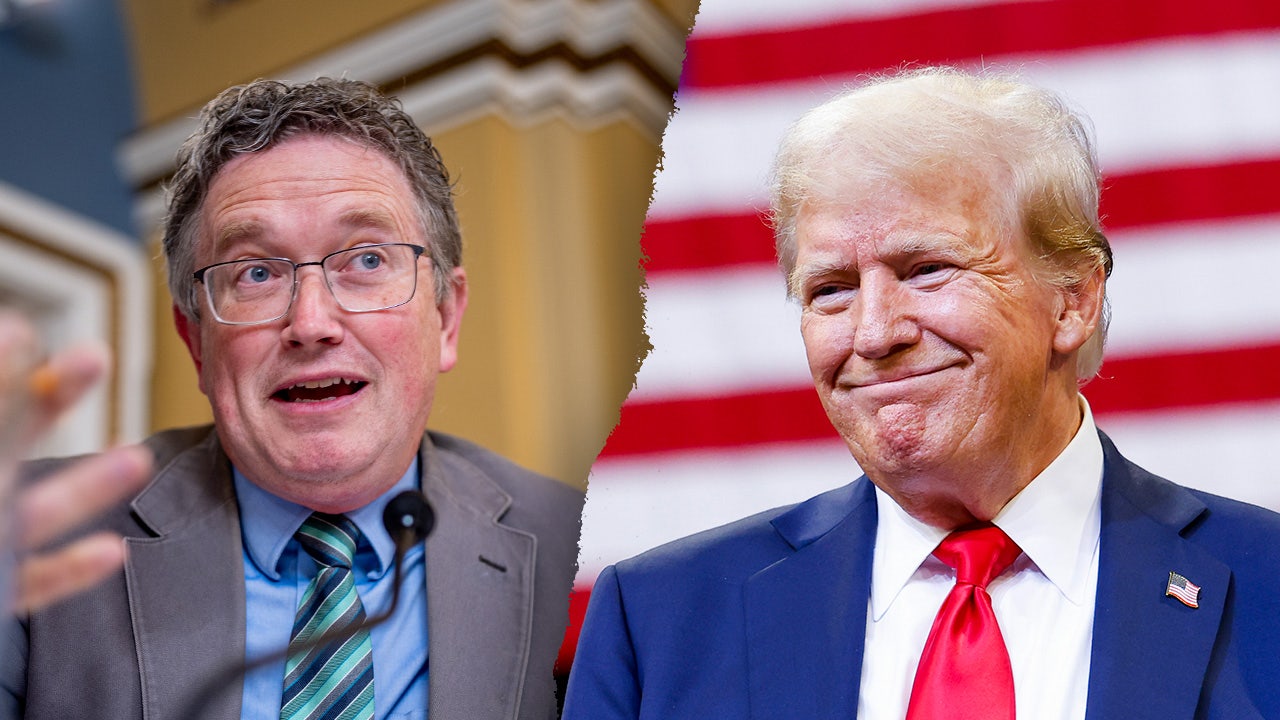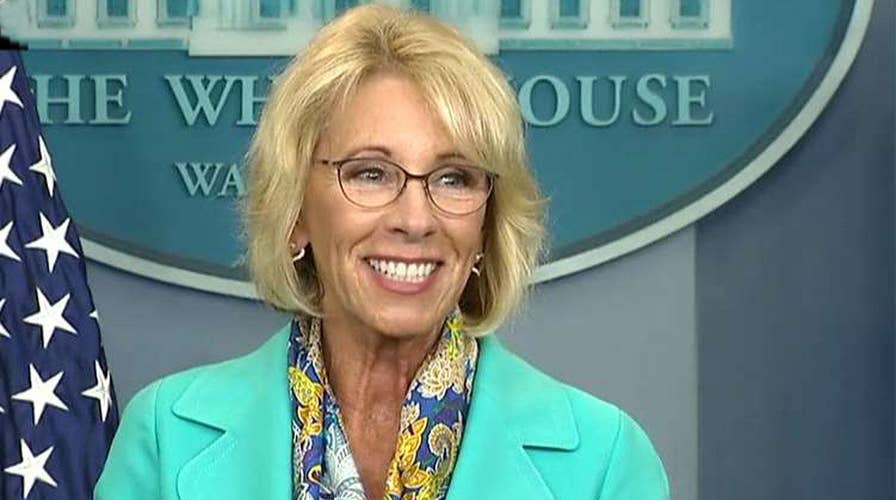**So, let’s talk about the Trump Department of Education.** You might be wondering, what exactly happened during those four years under the Trump administration when it came to education policies? It wasn’t all sunshine and rainbows, that’s for sure. There were some major shake-ups, controversial decisions, and a whole lot of debate surrounding the direction education in America was heading. Whether you’re a student, a parent, or just someone interested in how government policies shape our schools, this article is going to break it down for you. We’ll explore everything from the key figures involved to the long-term impact of their decisions. Let’s dive in!
Education is one of the most critical aspects of any nation’s growth, and during Donald Trump’s presidency, the Department of Education became a focal point for discussions about reform, accessibility, and accountability. The policies introduced by the department sparked both praise and criticism, with supporters arguing that they aimed to empower parents and students while detractors claimed they undermined public education. In this article, we’ll take a closer look at what happened during Trump’s time in office and how it affected millions of Americans.
Now, before we get too deep into the details, let’s set the stage. The Trump administration had a very specific vision for education, and that vision was heavily influenced by key figures like Betsy DeVos, who served as the Secretary of Education. Her tenure was marked by bold moves, including pushing for school choice, expanding charter schools, and reducing federal oversight. But was it all good? Or did it create more problems than solutions? Stick around, and we’ll unpack it all for you.
Read also:Discover The Best Remoteiot P2p Solutions For Your Business
Table of Contents
- Biography: Meet Betsy DeVos
- Key Policies of the Trump Department of Education
- The Rise of School Choice
- Reducing Federal Oversight
- Changes in Student Loan Policies
- Impact on Public Schools
- Challenges Faced by the Department
- The Long-Term Legacy
- Statistics and Data
- Conclusion: What’s Next for Education?
Biography: Meet Betsy DeVos
Who Is Betsy DeVos?
Alright, let’s start with the woman who was at the helm of the Trump Department of Education—Betsy DeVos. She’s a name you’ve probably heard thrown around in political circles, but who exactly is she? Betsy DeVos is a billionaire businesswoman and philanthropist from Michigan with a long history of advocating for school choice and education reform. Before joining the Trump administration, she was heavily involved in education policy at the state level, particularly in her home state of Michigan.
Now, here’s the kicker—DeVos had no prior experience in public education. That’s right, zero. But she had a lot of money and influence, which she used to push for policies that favored private and charter schools over traditional public schools. Her appointment as Secretary of Education was controversial, to say the least, with opponents arguing that she lacked the necessary expertise to lead such an important department. But hey, politics is politics, and she got the job.
Betsy DeVos: Key Facts
| Full Name | Betsy DeVos |
|---|---|
| Title | Secretary of Education (2017–2021) |
| Party Affiliation | Republican |
| Education | Calvin College (now Calvin University) |
| Net Worth | $2.4 billion (as of 2023) |
Key Policies of the Trump Department of Education
So, what exactly did the Trump Department of Education do during its time in office? Well, there were a lot of changes, and some of them were pretty significant. One of the biggest priorities was promoting school choice, which we’ll talk more about in a bit. But there were also changes to student loan policies, Title IX regulations, and accountability measures for schools. Let’s break it down:
- School Choice: The department pushed for more options for parents, including vouchers and charter schools.
- Student Loans: Changes were made to the Public Service Loan Forgiveness program and the Borrower Defense Rule.
- Title IX: New guidelines were issued to address sexual misconduct on college campuses.
- Federal Oversight: The department reduced its role in regulating schools, giving more power to states and local districts.
These policies were designed to give parents and students more control over their education, but they also sparked a lot of debate. Supporters argued that they increased flexibility and innovation, while critics claimed they undermined public education and disproportionately affected marginalized communities.
The Rise of School Choice
What Is School Choice?
School choice is all about giving parents the option to send their kids to the school that best fits their needs, whether it’s a public school, a charter school, or even a private school. The Trump Department of Education was a big proponent of this idea, and they worked hard to expand access to these options. But why was school choice such a big deal?
Proponents argue that school choice empowers parents and gives them more say in their children’s education. It also introduces competition among schools, which can lead to better outcomes. However, critics say that it diverts funding away from public schools and creates inequality, especially for students who don’t have the means to access these alternative options.
Read also:Iot Visualization Unlocking The Power Of Data In The Modern World
How Did Trump Support School Choice?
During his presidency, Trump and DeVos proposed a $5 billion federal tax credit program to fund school choice initiatives. They also pushed for the expansion of charter schools and the use of vouchers, which allow parents to use public funds to pay for private school tuition. While these efforts faced opposition from teachers’ unions and other groups, they did gain traction in some states.
Reducing Federal Oversight
Another major focus of the Trump Department of Education was reducing federal oversight of schools. The idea was to give more power to states and local districts, allowing them to make decisions based on their specific needs. But what does that mean in practice?
For starters, the department rolled back several Obama-era regulations, including those related to accountability and testing. This gave schools more flexibility in how they measured student performance and addressed issues like discipline and equity. While some saw this as a positive move, others worried that it could lead to a lack of consistency and accountability across the country.
Changes in Student Loan Policies
Student loans were another area where the Trump Department of Education made significant changes. One of the biggest was the overhaul of the Public Service Loan Forgiveness (PSLF) program, which was intended to help borrowers who worked in public service jobs. The department tightened the requirements for forgiveness, making it harder for borrowers to qualify.
Additionally, the Borrower Defense Rule, which allowed students to have their loans discharged if their school engaged in fraudulent practices, was also weakened. These changes were criticized by consumer advocates, who argued that they made it harder for students to get relief when things went wrong.
Impact on Public Schools
So, how did all of these policies affect public schools? Well, it’s a mixed bag. On one hand, reducing federal oversight gave schools more freedom to innovate and tailor their programs to local needs. On the other hand, it also meant less accountability and fewer resources for schools that were already struggling.
Furthermore, the push for school choice and charter schools diverted funding away from traditional public schools, leaving them with fewer resources to meet the needs of their students. This created a lot of tension between supporters of school choice and those who believe in the importance of public education.
Challenges Faced by the Department
No administration is without its challenges, and the Trump Department of Education was no exception. One of the biggest hurdles they faced was opposition from teachers’ unions, who were strongly against many of their policies. There was also pushback from civil rights groups, who argued that the changes would disproportionately affect low-income and minority students.
Another challenge was the department’s lack of transparency and communication. Critics accused DeVos and her team of making decisions without consulting stakeholders or providing clear explanations for their actions. This led to a lot of confusion and mistrust among educators and parents.
The Long-Term Legacy
So, what’s the long-term impact of the Trump Department of Education’s policies? That remains to be seen, but there are a few things we can say for sure. First, the push for school choice and charter schools is likely to continue, with more states exploring these options. Second, the reduction in federal oversight may lead to more variation in how schools are run and how students are educated.
However, the challenges faced by the department, particularly around accountability and equity, are likely to persist. It’s up to future administrations to address these issues and ensure that all students have access to a quality education, regardless of their background or zip code.
Statistics and Data
Let’s take a look at some of the numbers behind the Trump Department of Education’s policies:
- During Trump’s presidency, the number of charter schools in the U.S. increased by 10%.
- The department’s proposed $5 billion tax credit program for school choice was estimated to benefit around 2 million students.
- Only 29 borrowers were approved for PSLF forgiveness in the first year of the program under Trump, compared to thousands in previous years.
- Public school funding decreased by an average of 3% in states that expanded school choice initiatives.
These stats paint a picture of both progress and challenges, highlighting the complexity of education policy in America.
Conclusion: What’s Next for Education?
As we wrap up this deep dive into the Trump Department of Education, it’s clear that their policies had a significant impact on the landscape of American education. Whether you agree with them or not, there’s no denying that they sparked important conversations about the role of government in education and the best ways to ensure equal opportunities for all students.
So, what’s next? Well, that’s up to all of us. If you’re passionate about education, we encourage you to get involved—whether that’s by advocating for policies you believe in, supporting teachers and schools in your community, or simply staying informed about the issues. Together, we can work towards a brighter future for education in America.
And don’t forget to share this article with your friends and family! The more people know about these issues, the better equipped we all are to make a difference. Thanks for reading, and let’s keep the conversation going!

